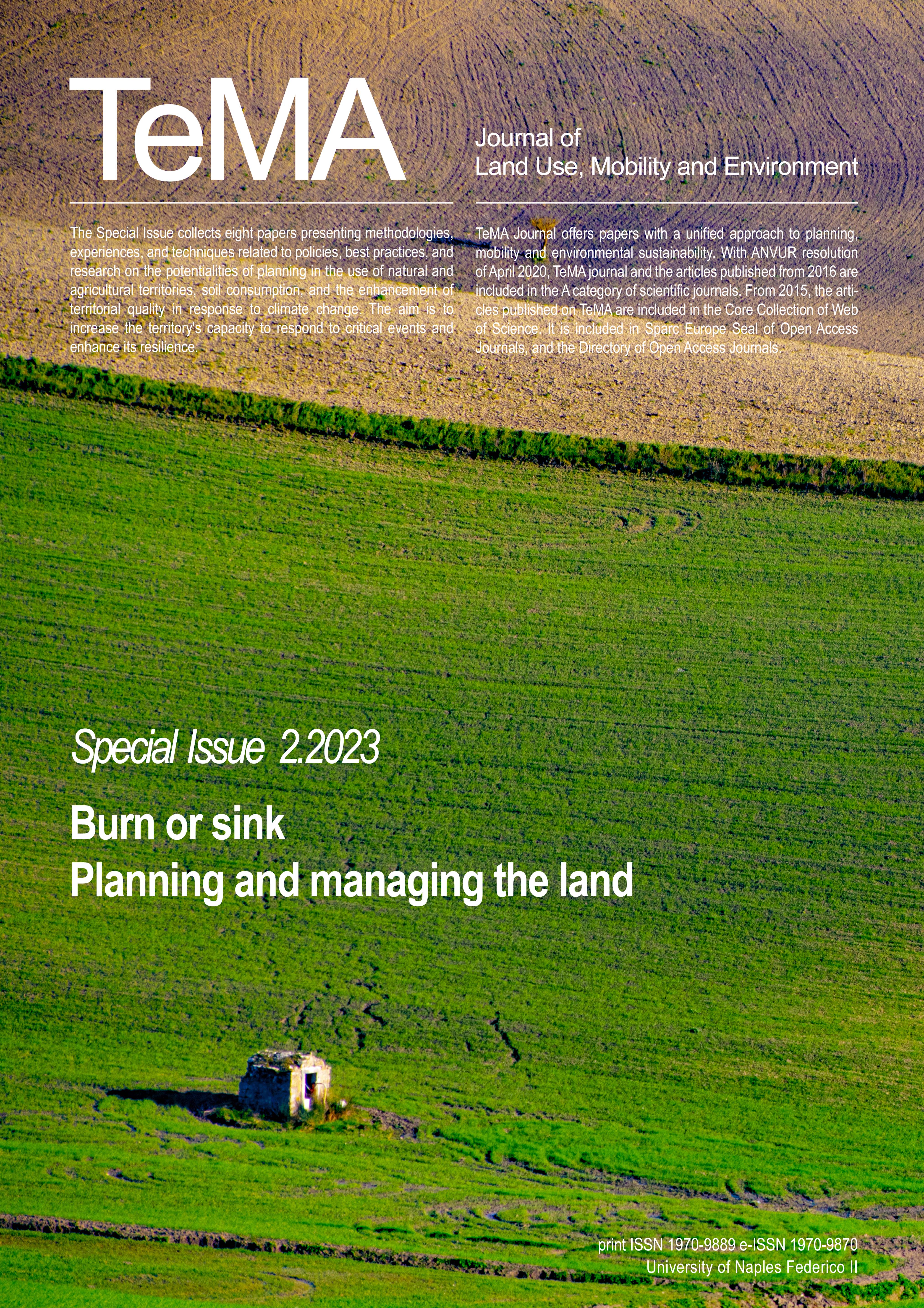Factors affecting the supply of urban regulating ecosystem services. Empirical estimates from Cagliari, Italy
DOI:
https://doi.org/10.6093/1970-9870/10194Keywords:
Ecosystem services, Urban vegetation, Carbon capture and storage, Urban runoff control, Urban heat mitigationAbstract
This study aims at analyzing the relationships between supply of ecosystem services, features of green areas and characteristics of settlements in urban contexts, by taking the Italian city of Cagliari as study area. The services offered by the urban ecosystems that are identified as the most relevant in association with the spatial framework of green areas in urban environments are heat mitigation, carbon capture and storage, and runoff control, with particular reference to flood-related events. The features of green areas are identified with reference to the height of vegetation, by distinguishing between grasslands, shrubby cover, and trees and woodland cover. Finally, we characterize the urban settlement through the building and population densities, and through the education level, as a proxy for the residents’ social statuses. The assessment of performances of the urban ecosystem services shows negative correlations with the intensity of urbanization, whereas the size of the enhancement in the supply of ecosystem services can be associated with different types of green areas. In terms of policy implications, the outcomes of the study show that there is plenty of room for improvement in the ecosystem services performance based on fine-tuning measures which involve building and population densities and vegetation cover.
Downloads
Downloads
Published
How to Cite
Issue
Section
License
Authors who publish in this journal agree to the following:
1. Authors retain the rights to their work and give in to the journal the right of first publication of the work simultaneously licensed under a Creative Commons License - Attribution that allows others to share the work indicating the authorship and the initial publication in this journal.
2. Authors can adhere to other agreements of non-exclusive license for the distribution of the published version of the work (ex. To deposit it in an institutional repository or to publish it in a monography), provided to indicate that the document was first published in this journal.
3. Authors can distribute their work online (ex. In institutional repositories or in their website) prior to and during the submission process, as it can lead to productive exchanges and it can increase the quotations of the published work (See The Effect of Open Access)


